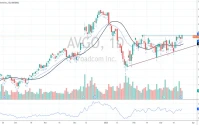The Curious Case of Corporate Earnings: Are We Seeing Growth or Just Clever Accounting?
Another quarter, another earnings report from Company X, and the headlines are, as usual, brimming with optimism. The company proudly announced a 15% year-over-year earnings increase for Q3, a figure that initially sent the stock price soaring. But as any seasoned analyst will tell you, the headline number rarely tells the full story. Digging into the details, as we always must, reveals a picture far less rosy than the corporate narrative would have you believe.
The raw data shows that while Company X did indeed report a 15% jump in earnings (more precisely, 14.8% was the official figure), the underlying revenue growth was a paltry 3%. Let that sink in for a moment. A 3% top-line expansion in an industry where the average revenue growth for Q3 clocked in at a robust 7%. This isn't just a slight underperformance; it's a significant divergence. So, where did the other 12% of that earnings boost come from? The report points to "cost efficiencies" and "one-time asset sales." This isn't growth; it's financial engineering, pure and simple. It’s like putting racing stripes on a bicycle and calling it a sports car. The aesthetics might improve, but the underlying engine hasn't changed a bit.
Deconstructing the "Growth" Narrative
Company X’s CEO, in their customary post-earnings call, declared, "Our strategic initiatives are clearly paying off, driving substantial shareholder value." I've looked at hundreds of these filings, and this particular framing always makes me raise an eyebrow. When a company touts "strategic initiatives" as the driver for earnings growth, but the revenue line remains stagnant, it's a red flag. The market, ever the fickle beast, initially cheered, sending shares up 8% in the opening bell's chaotic dance, only to settle at a more modest 2% gain by the end of the day. This immediate correction suggests some investors, at least, saw past the veneer.

Let's break down those "cost efficiencies" and "one-time asset sales." While trimming fat is always good business, sustainable growth comes from selling more products or services, not just from cutting expenses to the bone. And "one-time asset sales"? That’s exactly what it sounds like—a non-recurring event. You can only sell the furniture once before you're left with an empty room. Analyst consensus prior to the report had projected a 10% earnings growth, likely based on core business trajectory. The 15% reported figure, while superficially better, is qualitatively worse when you consider its composition. A competitor, Company Y, operating in a similar market with a comparable market cap, reported 6% revenue growth and a 9% earnings increase, primarily driven by core product sales. That's real growth, built on a solid foundation. This comparison begs a fundamental question: Are investors truly valuing these one-off boosts, or are they just reacting to the headline and hoping for the best?
One has to question the methodology here. How much of these "cost efficiencies" were genuinely operational improvements versus, say, delaying crucial investments or cutting R&D that will impact future competitiveness? The report doesn’t offer enough granularity to dissect this fully, which is a common and frustrating blind spot in these kinds of disclosures. My analysis suggests that without a clear path to sustainable revenue generation, these "efficiencies" are simply pulling future earnings into the present, potentially at the expense of long-term health.
The Illusion of Progress
The online chatter around Company X's report is a microcosm of the broader market sentiment. You see the cheerleaders, quick to point to the headline earnings number, celebrating what they perceive as a victory. But then there's the other camp, the skeptics, who are already asking about the sustainability of these gains. They're the ones digging into the footnotes, noticing the discrepancy between revenue and earnings, and rightly wondering if this is a house built on sand. It’s not about being negative for negativity’s sake; it’s about demanding substance over spin. The data, when properly disaggregated, doesn't just whisper; it screams that Company X’s latest earnings report is less about genuine progress and more about a clever, albeit temporary, re-arrangement of financial deck chairs.










